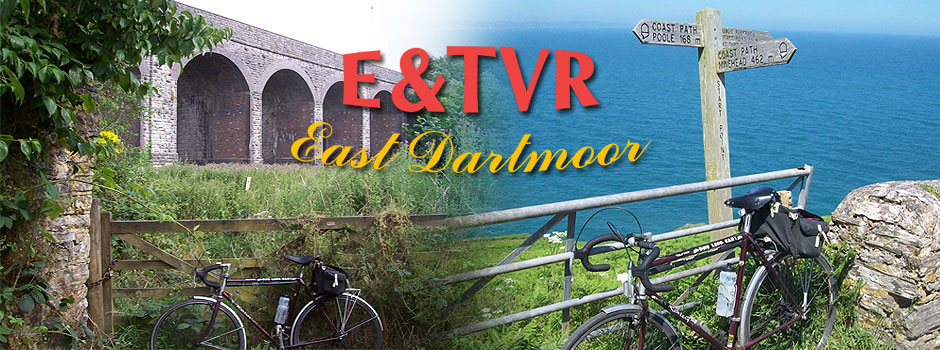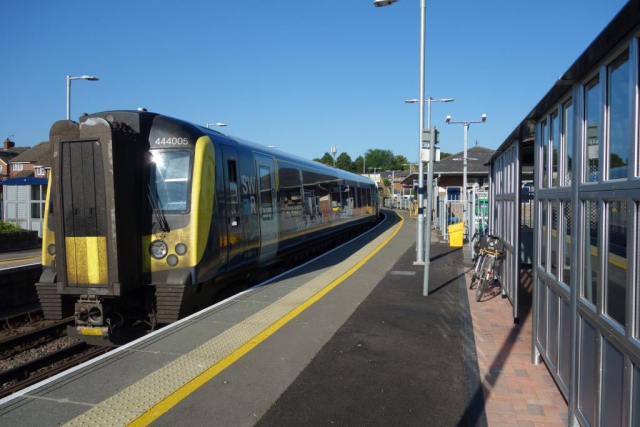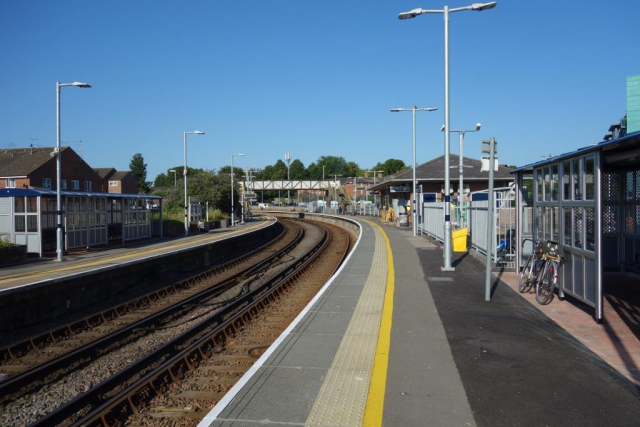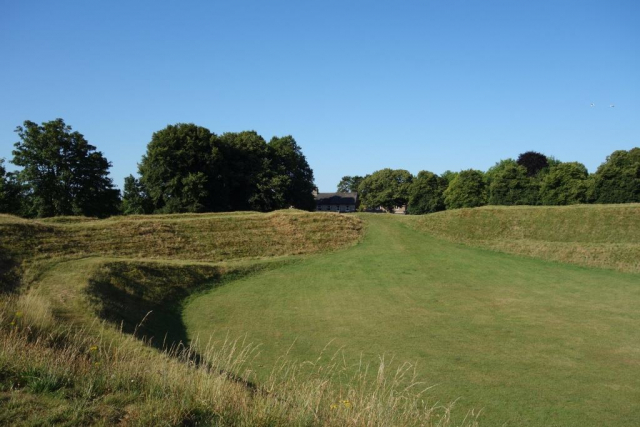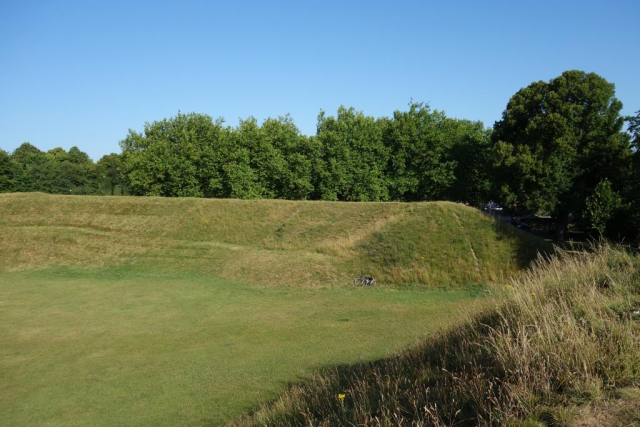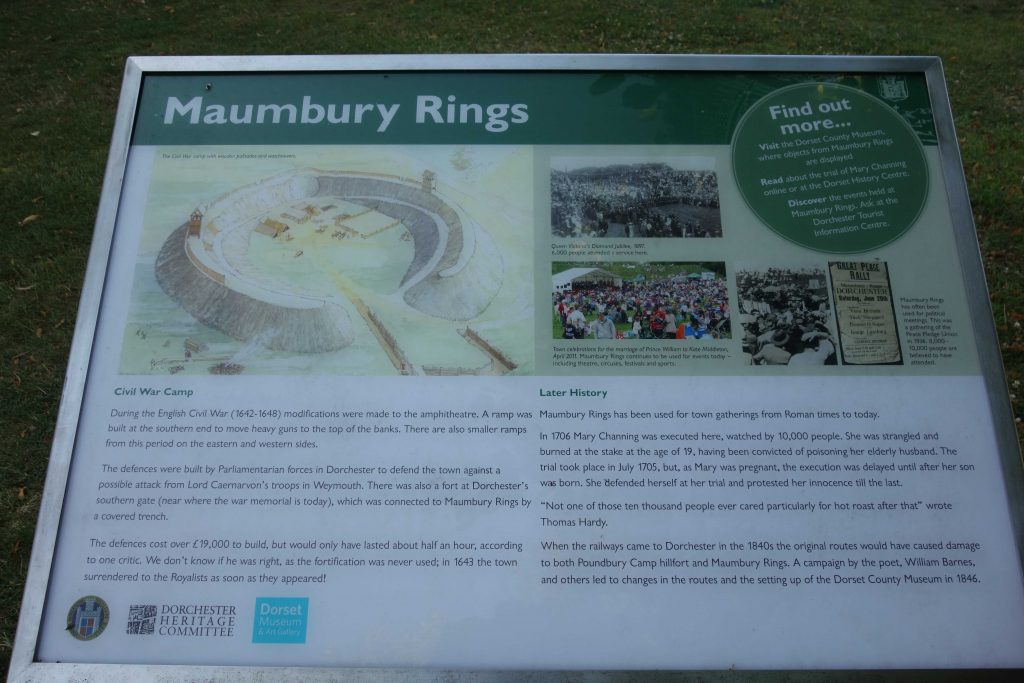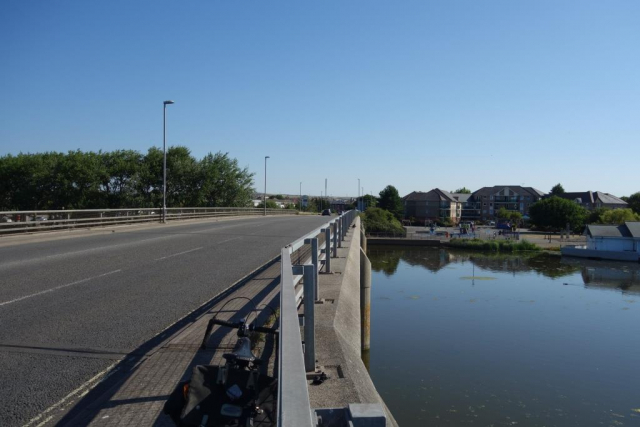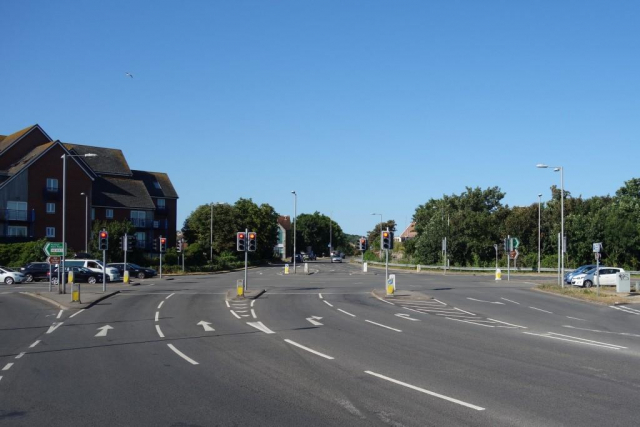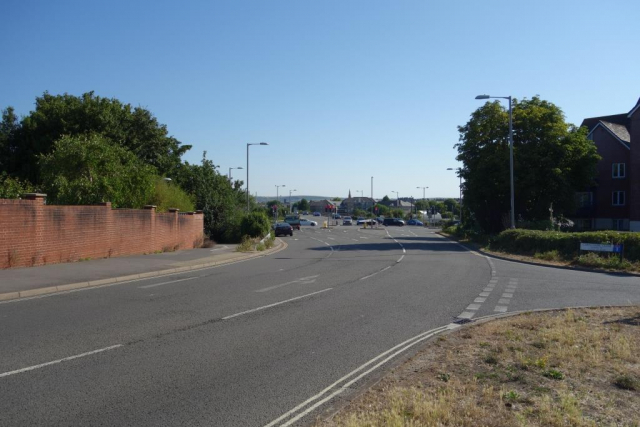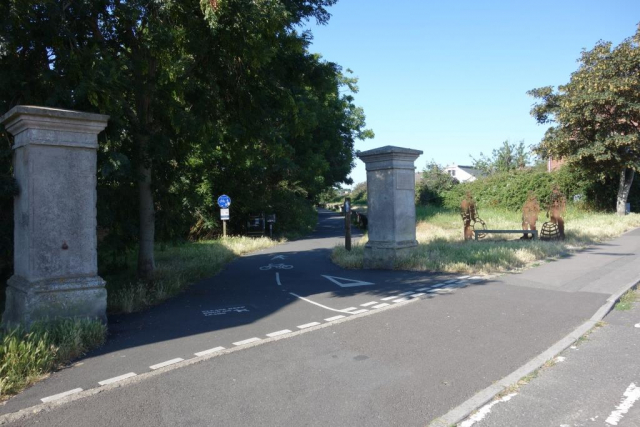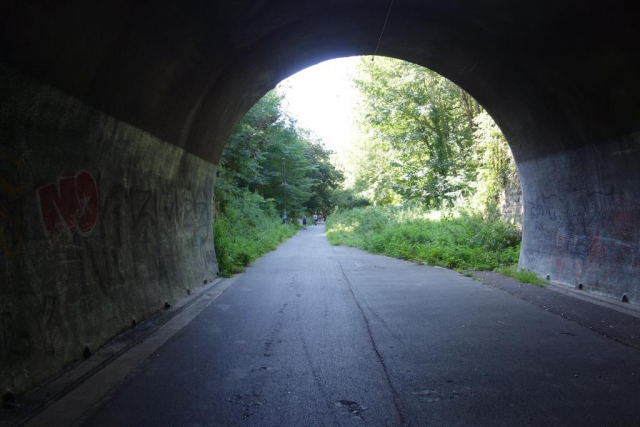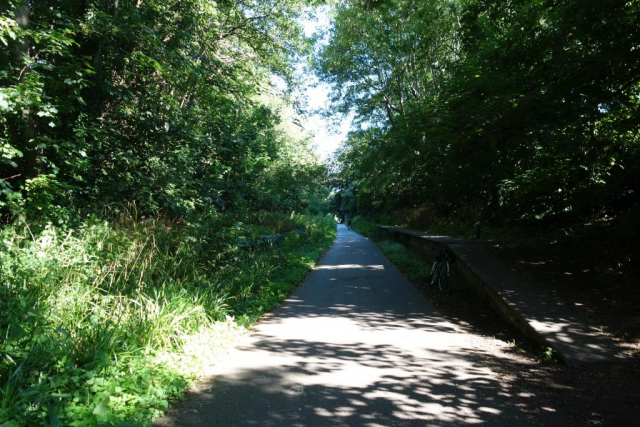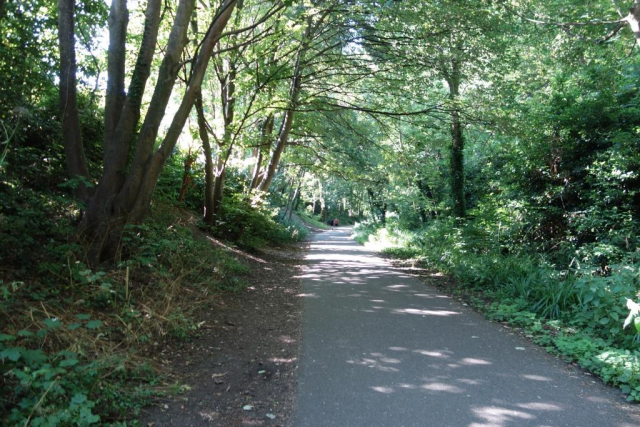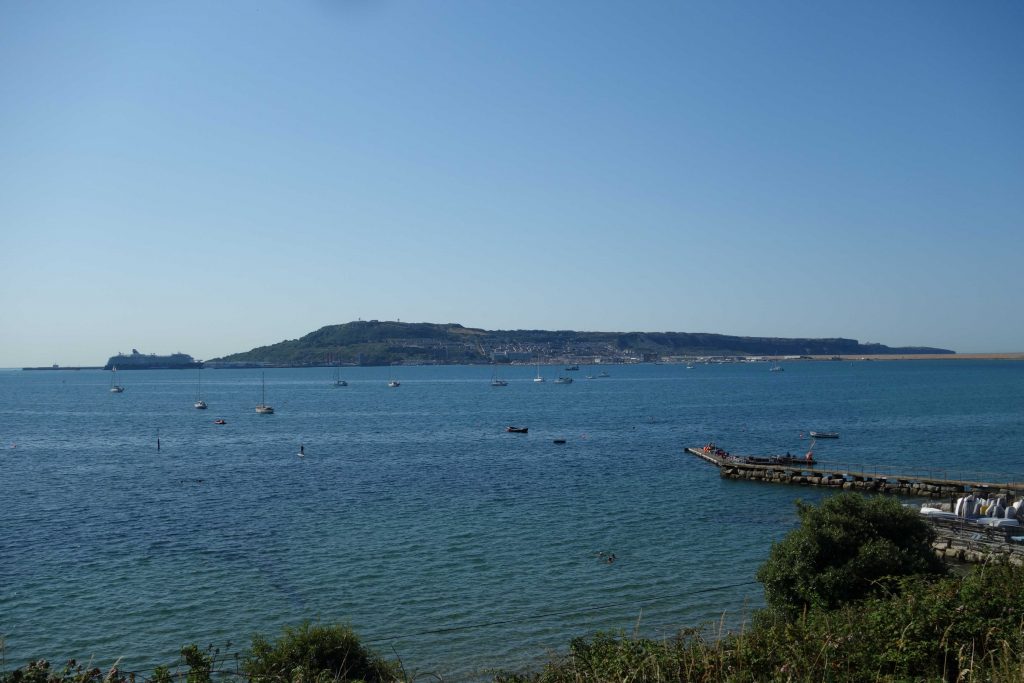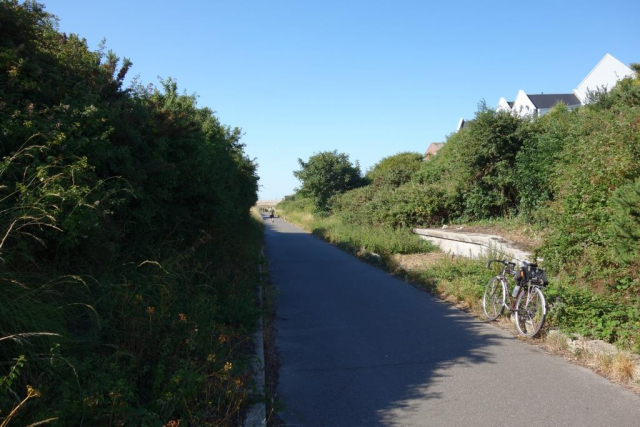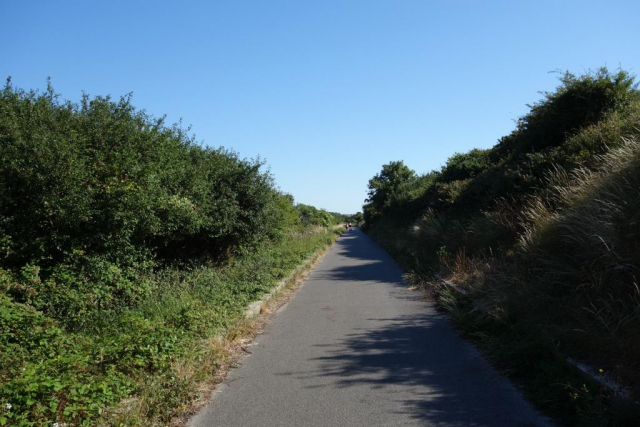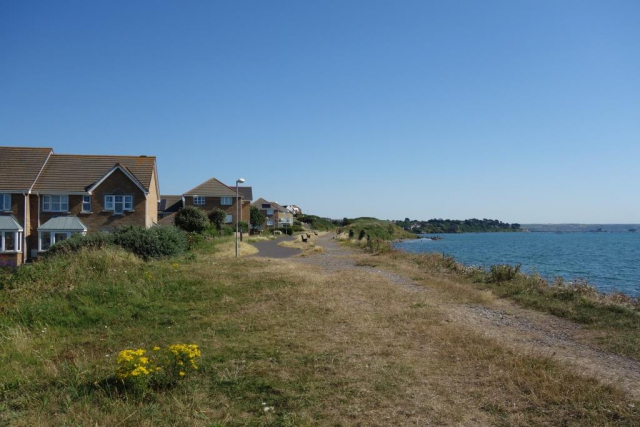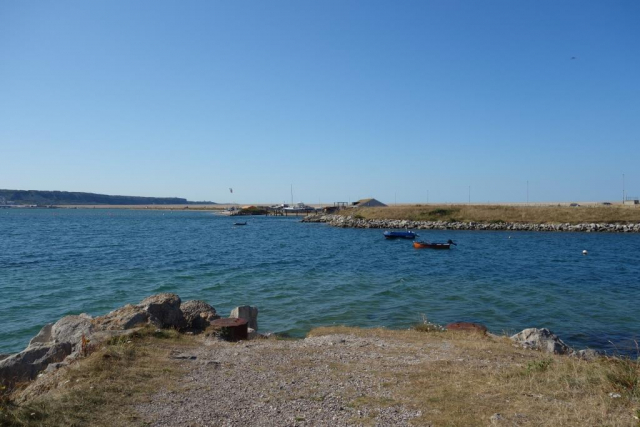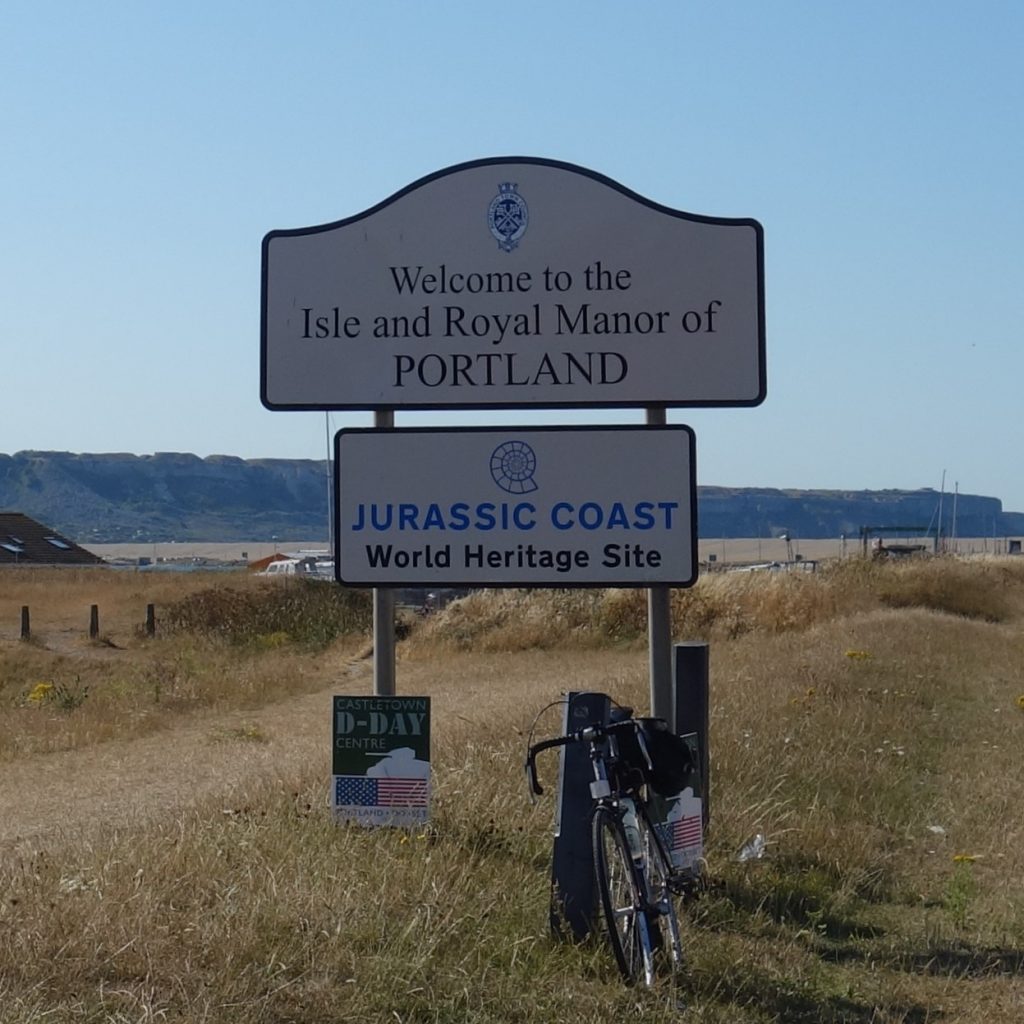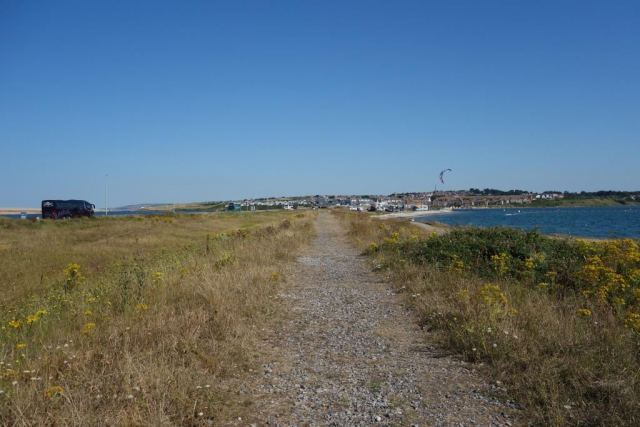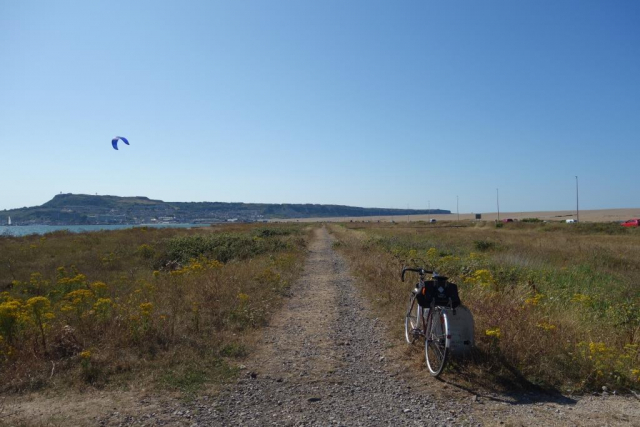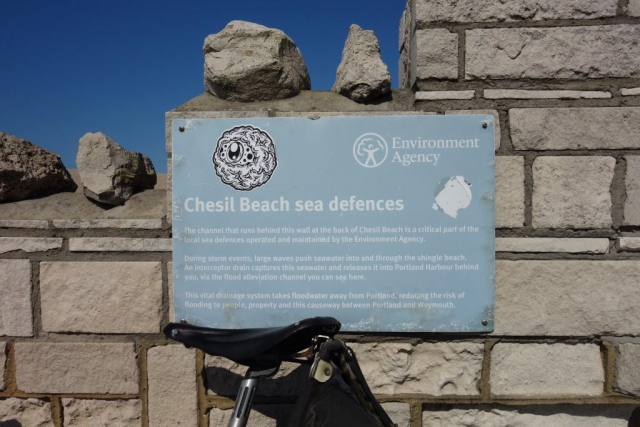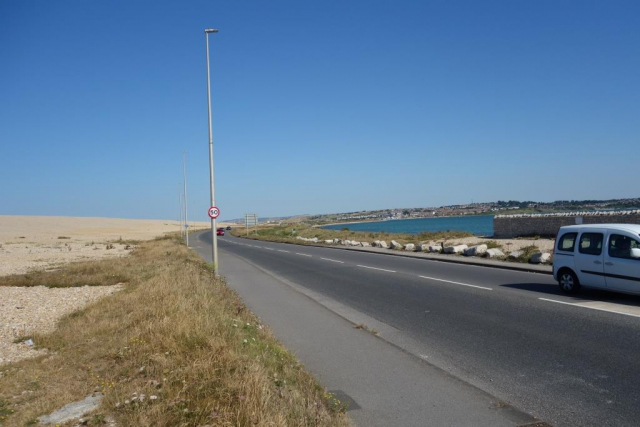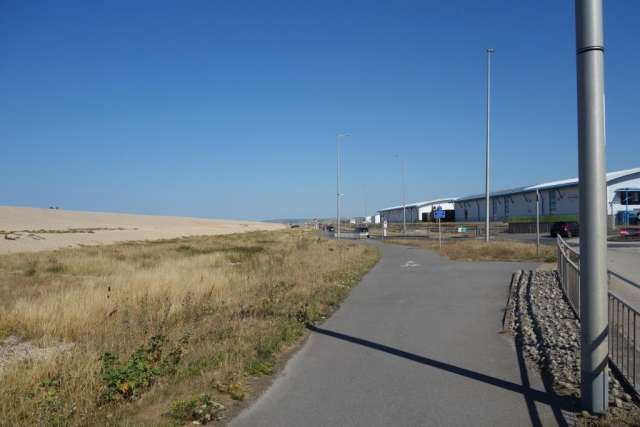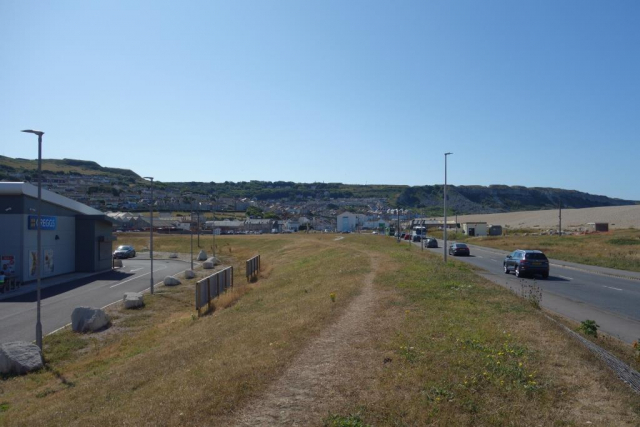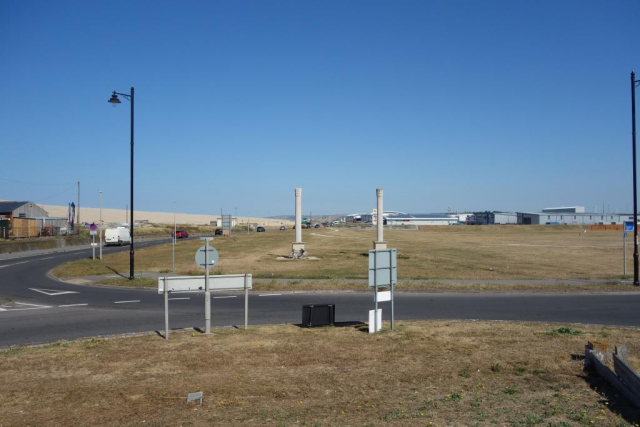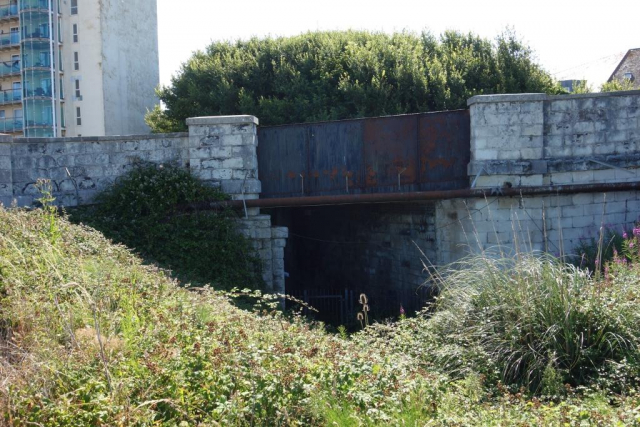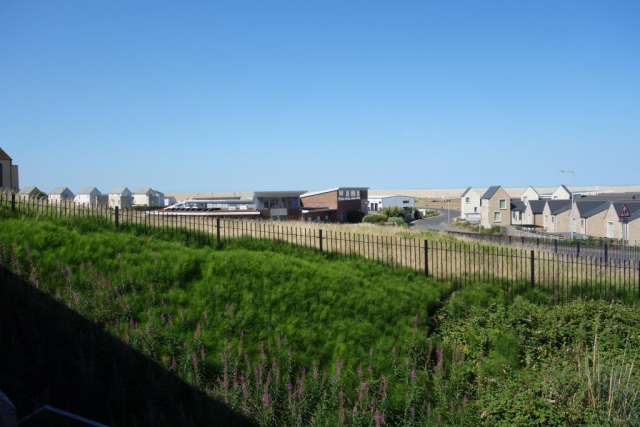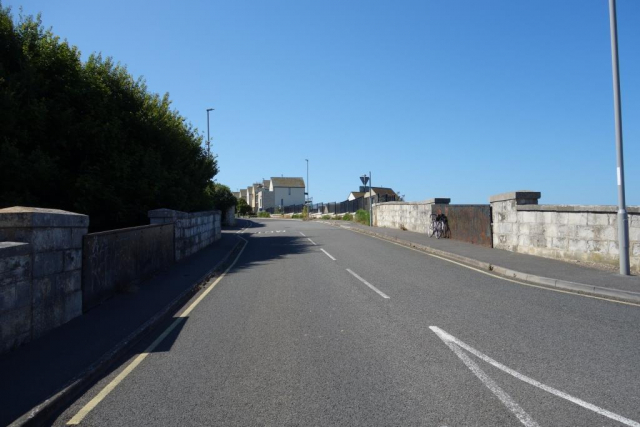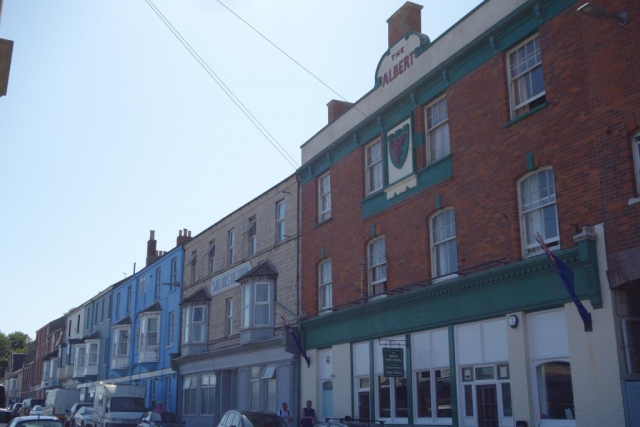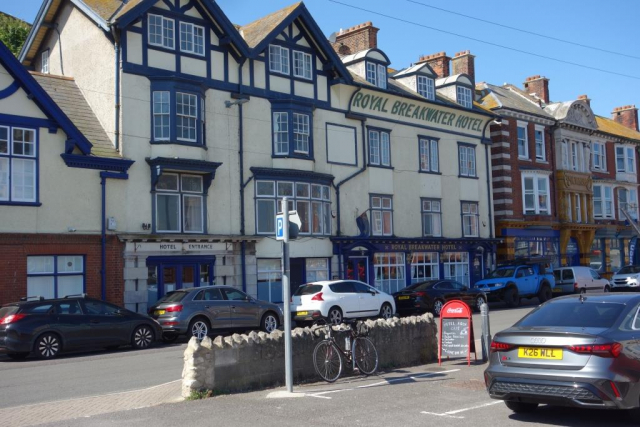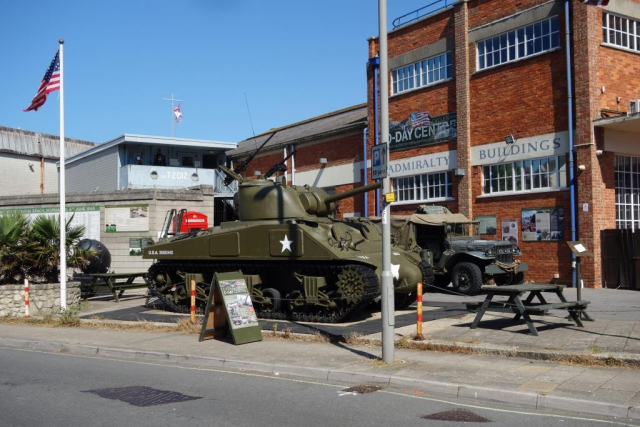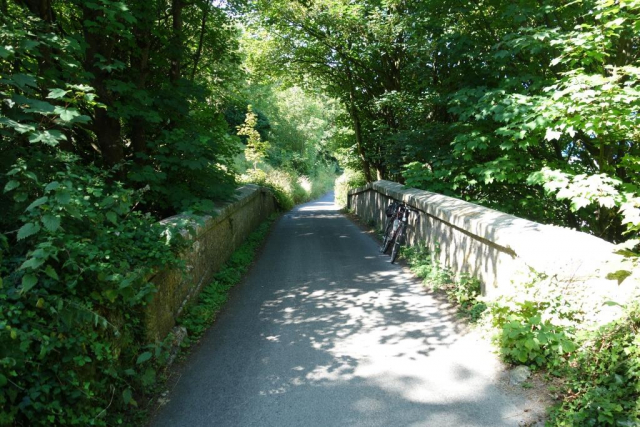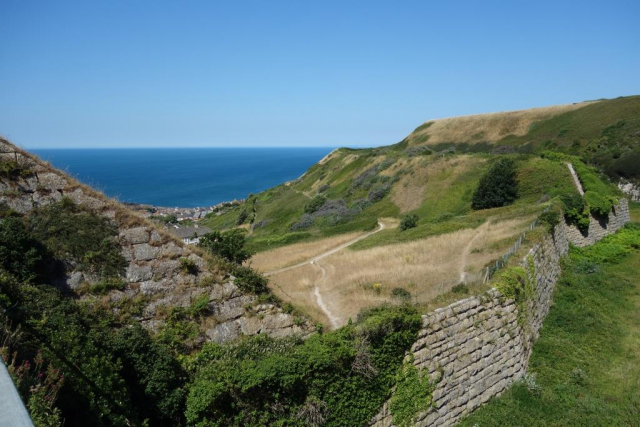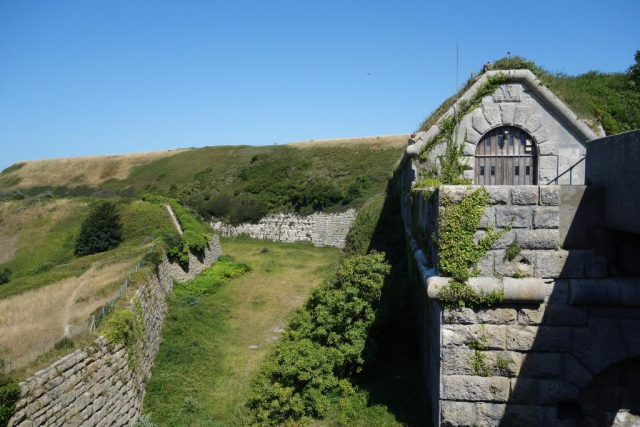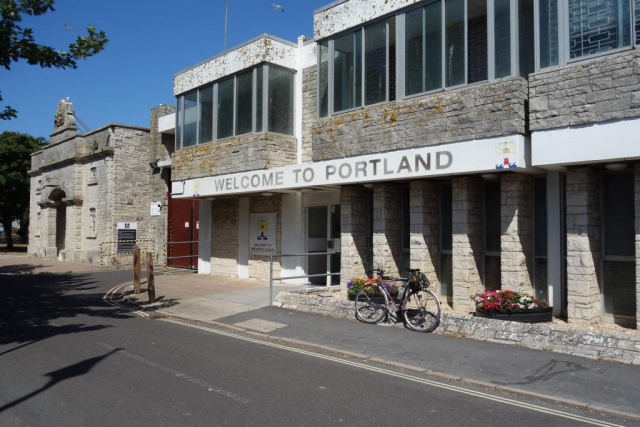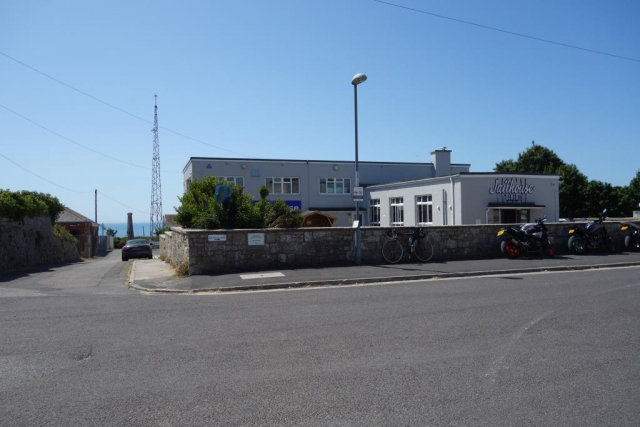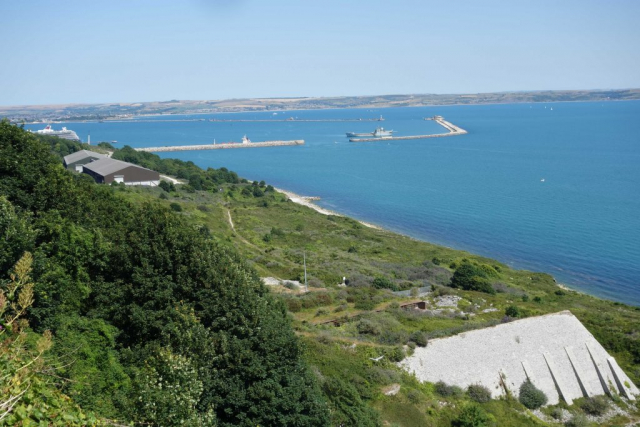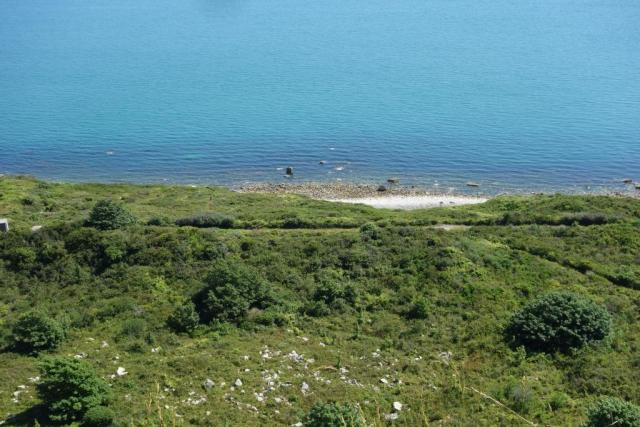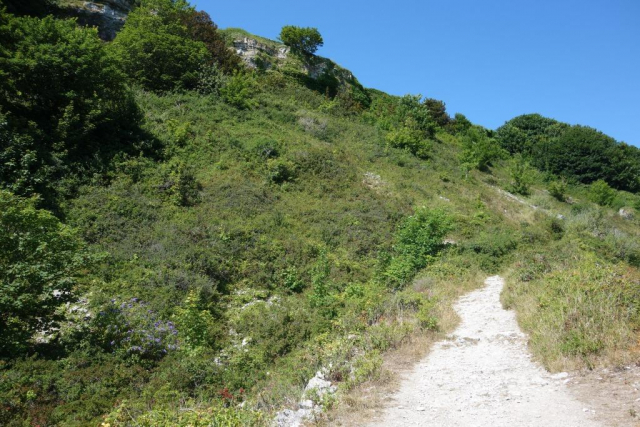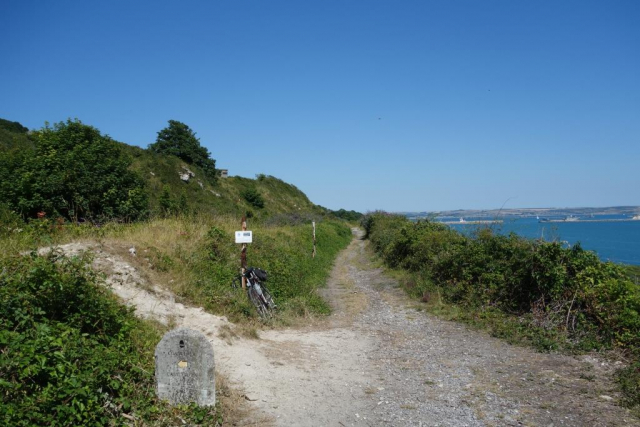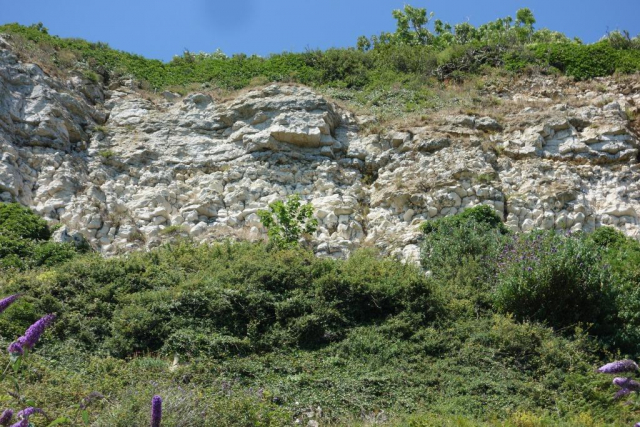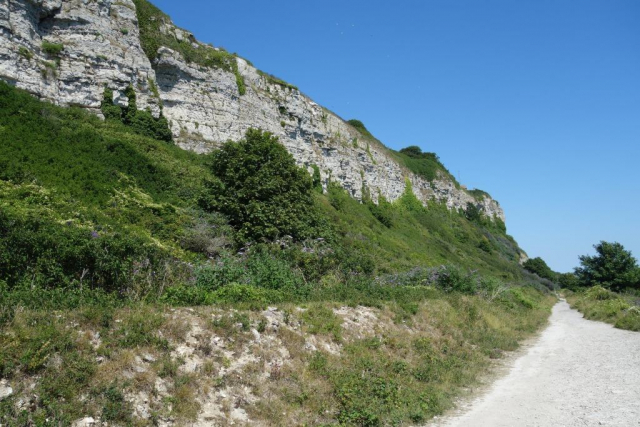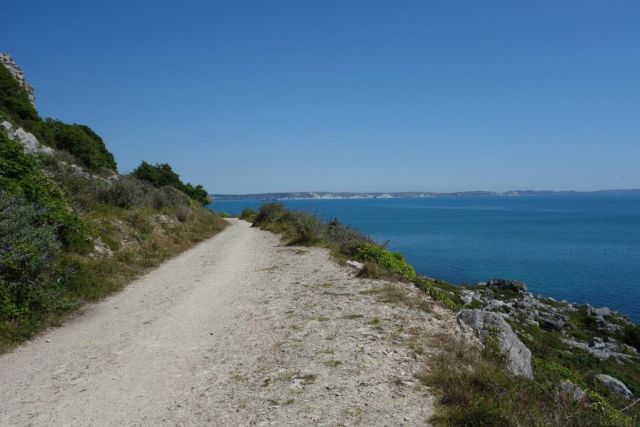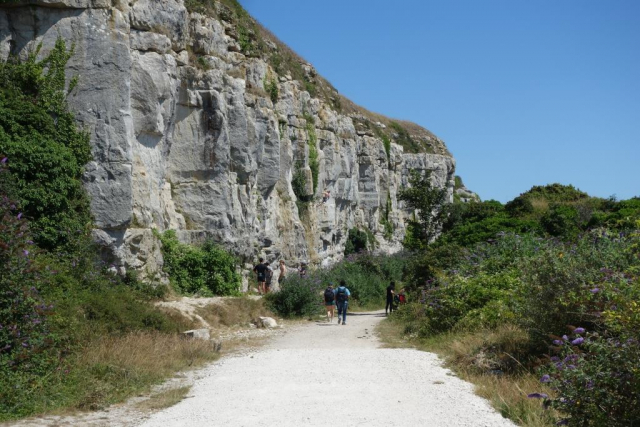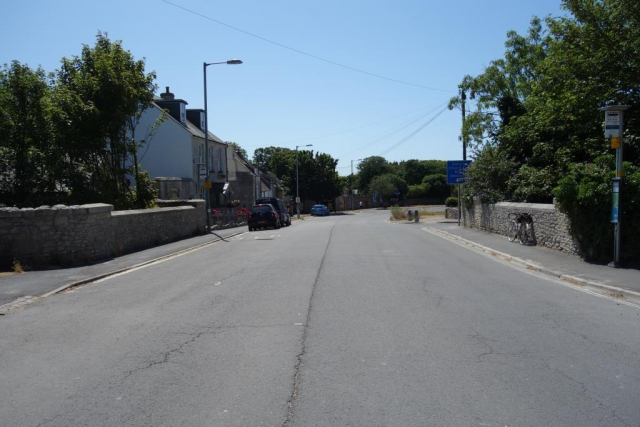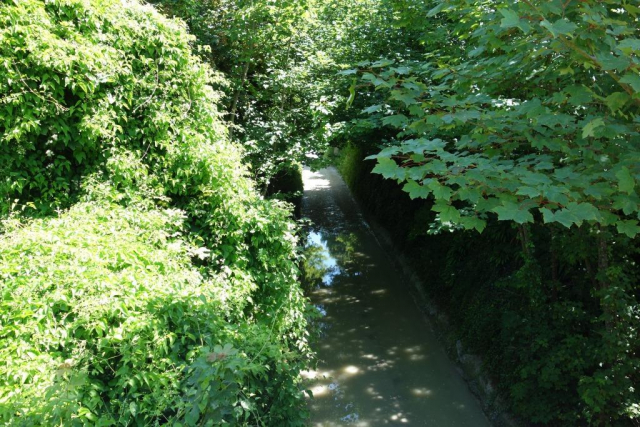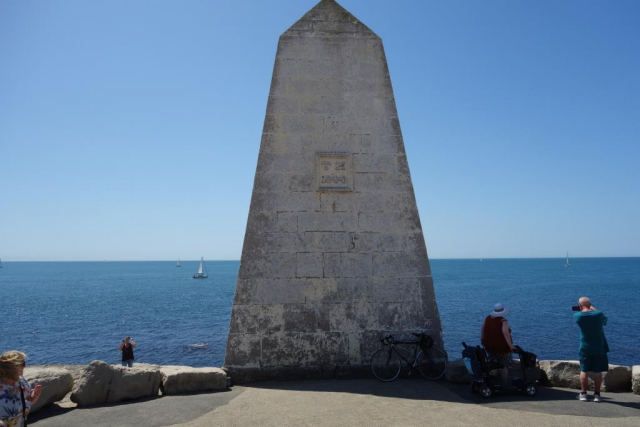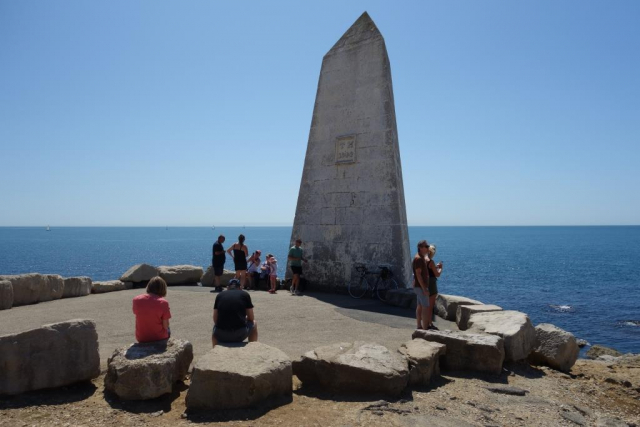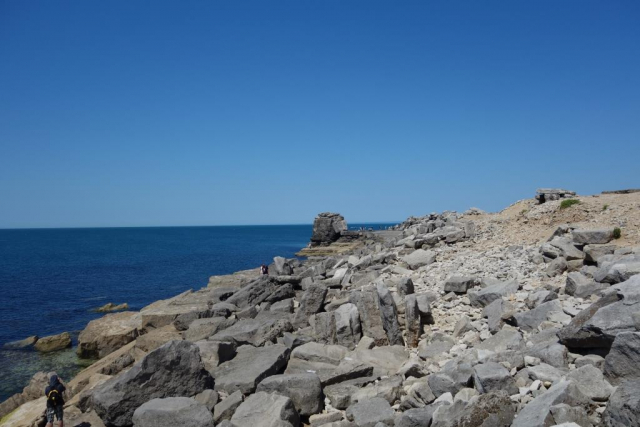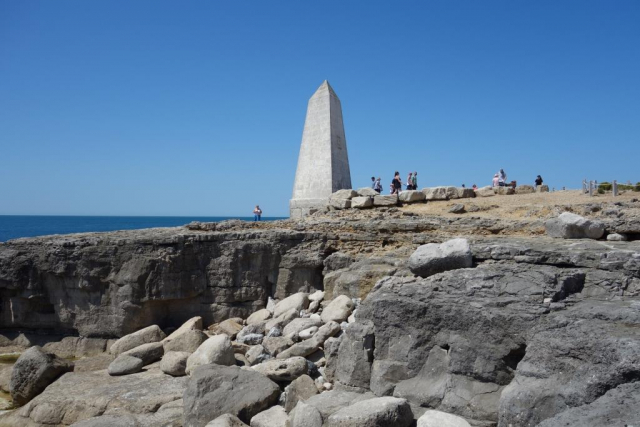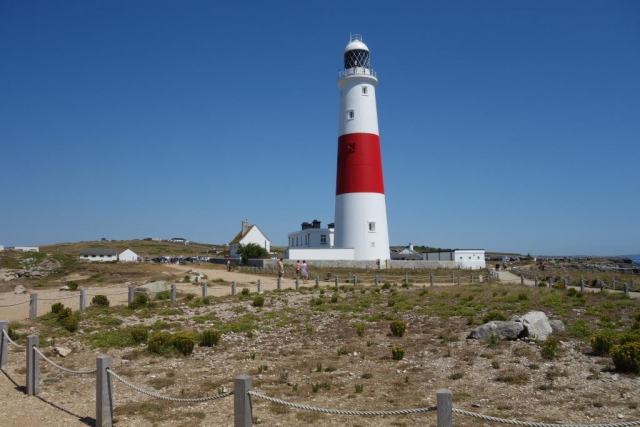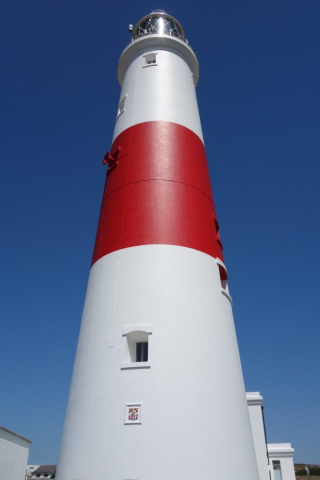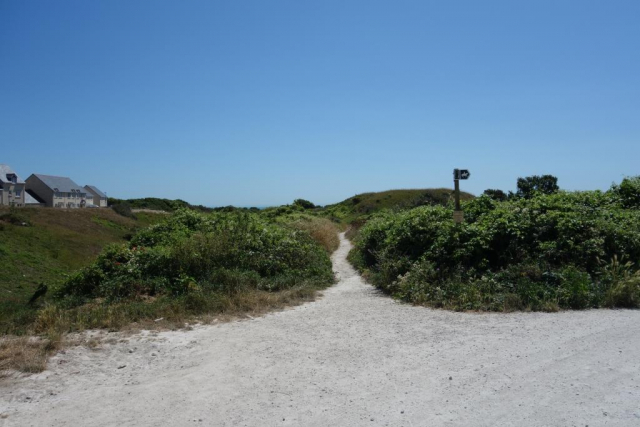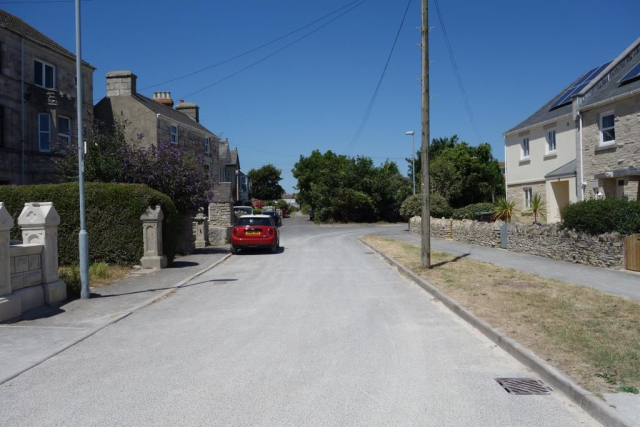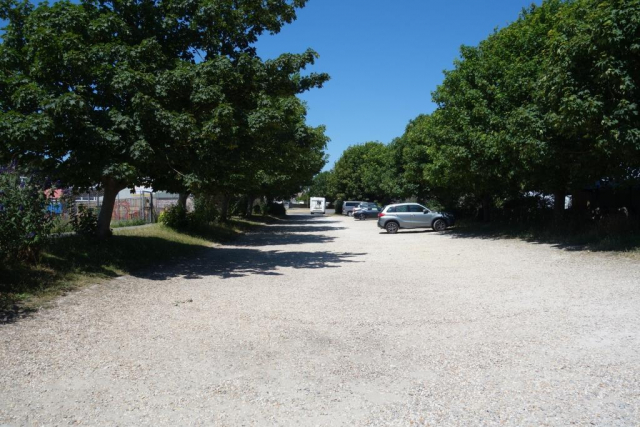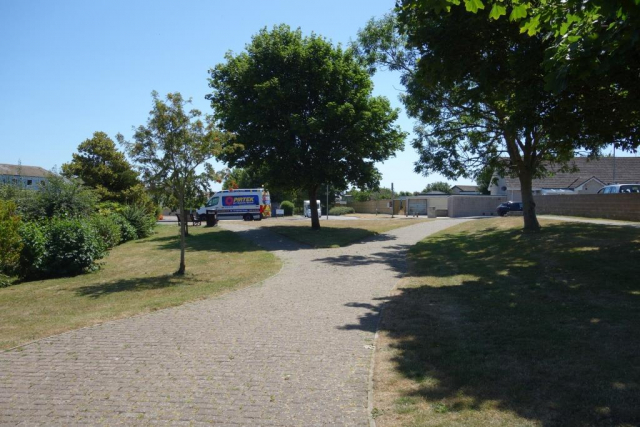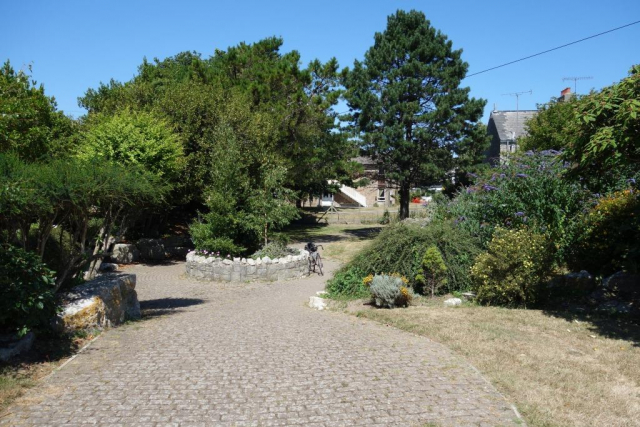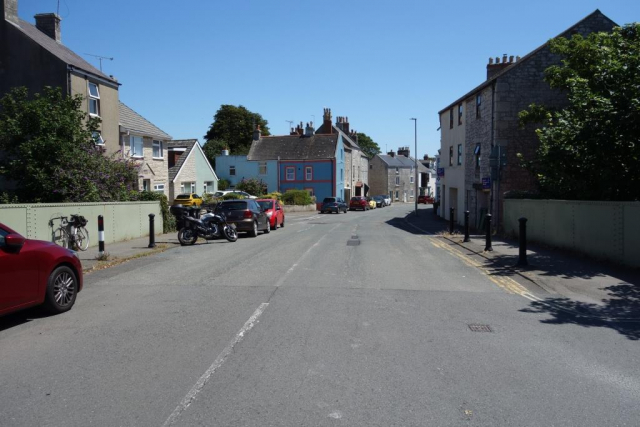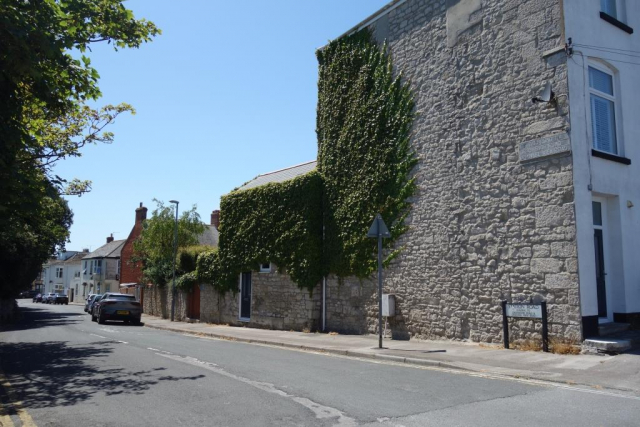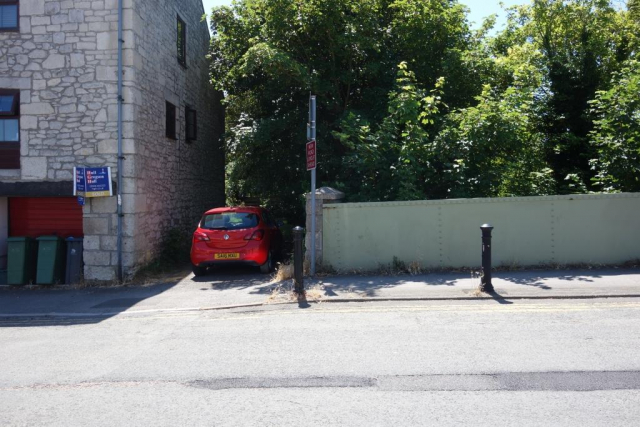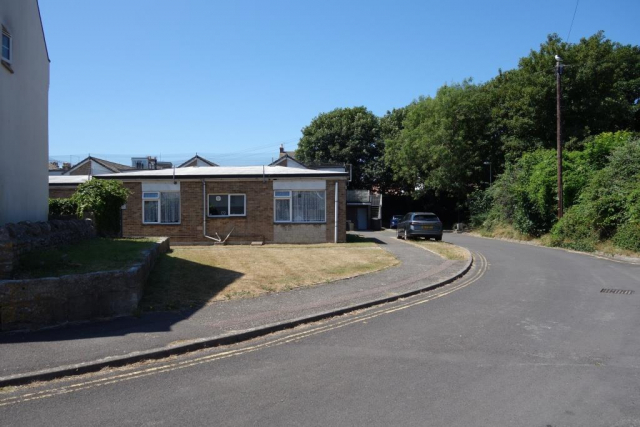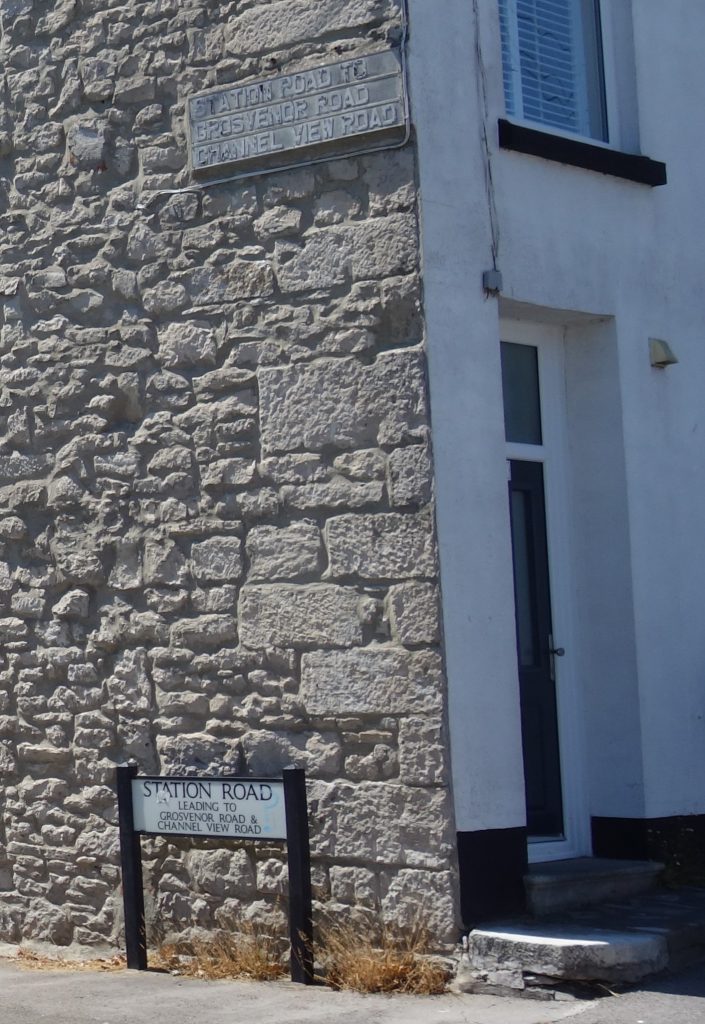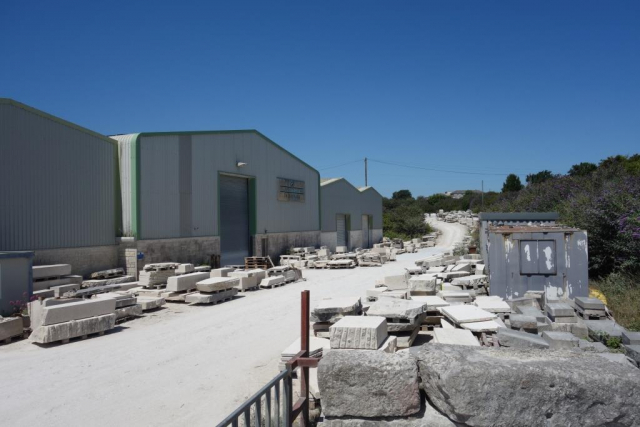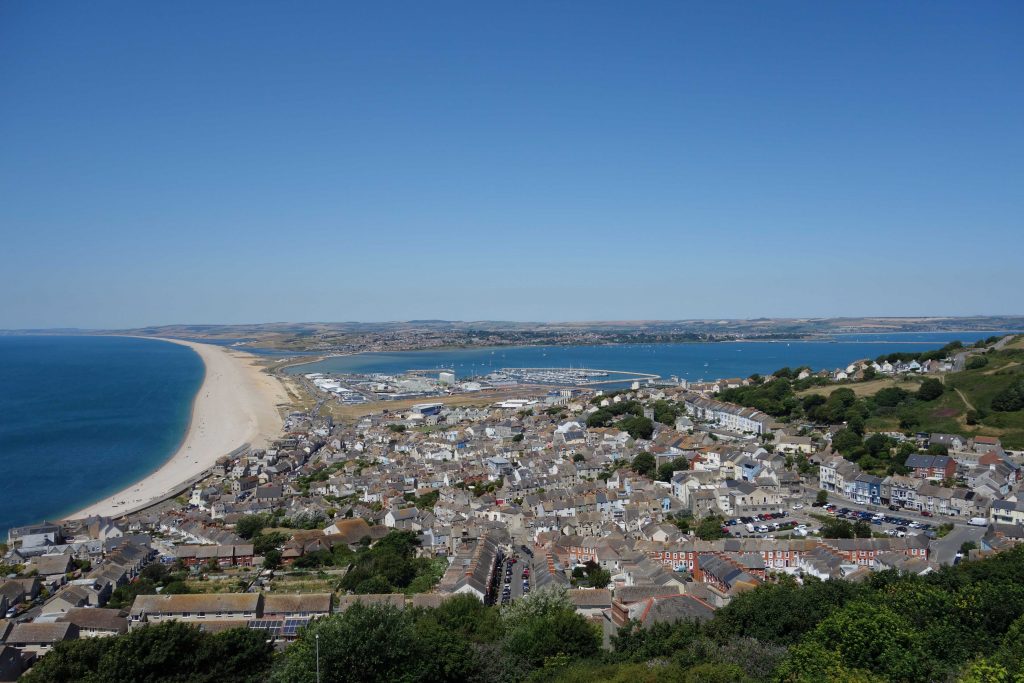It was the same routine: the 0510 from St. David’s to Yeovil Junction, a ride to Pen Mill and breakfast from the nearby filling station eaten on the platform in sunshine, while waiting for the 0733 to Weymouth.
The scout gave up a twenty minute advantage by changing trains at Dorchester for a brief journey on an E.M.U.
The scout had time to go and see the Rings again.

The line to Portland once lay to the right of it, curving towards Melcombe Regis Station, now completely obliterated.
Radipole Lake once lapped the edge of the line but much of it was taken to build ten carriage sidings, the site of which is now occupied by shopping sheds. More land was made for Melcombe Regis Station, which reduced the length of Backwater Viaduct. This is now smothered by roads and car parks.
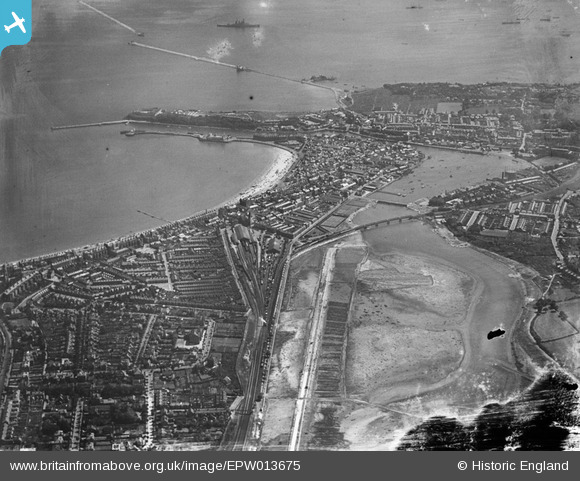
Westham Halt
The level crossing was on Abbotsbury Road, which the scout had ridden into town along the previous year.
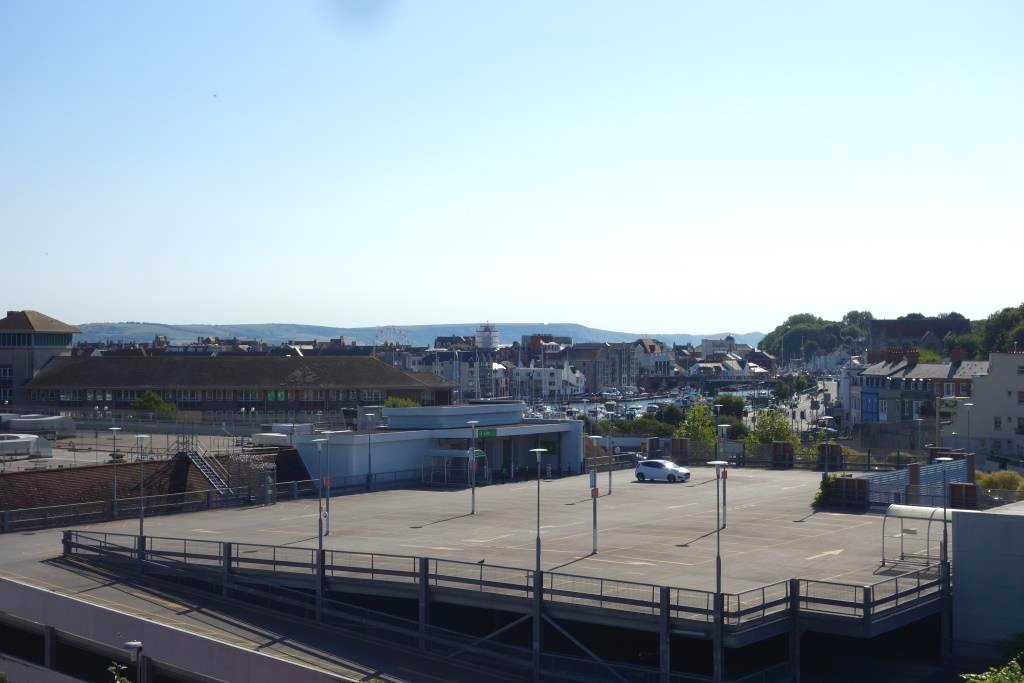
Looking from the railway embankment towards Town Bridge. +
Rodwell
Sandsfoot Castle Halt
Disgracefully, the scout missed the site of this halt, opened in 1932 for visitors to the ruins of the castle built by Henry VIII to defend against Rome and the French. The photograph below, reproduced from Wikipedia, was taken in 2008; it may now be completely overgrown.
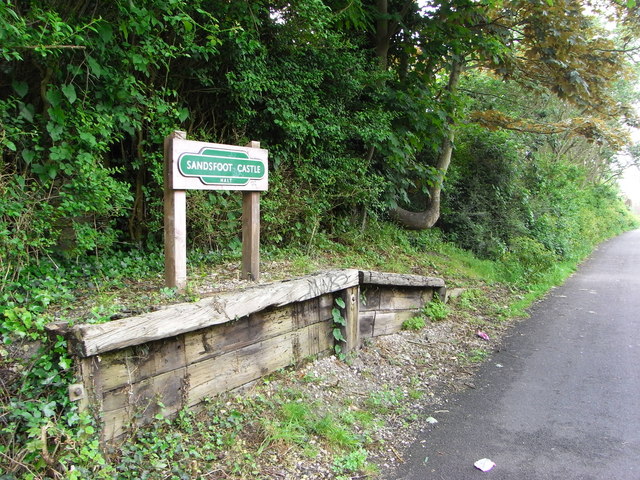
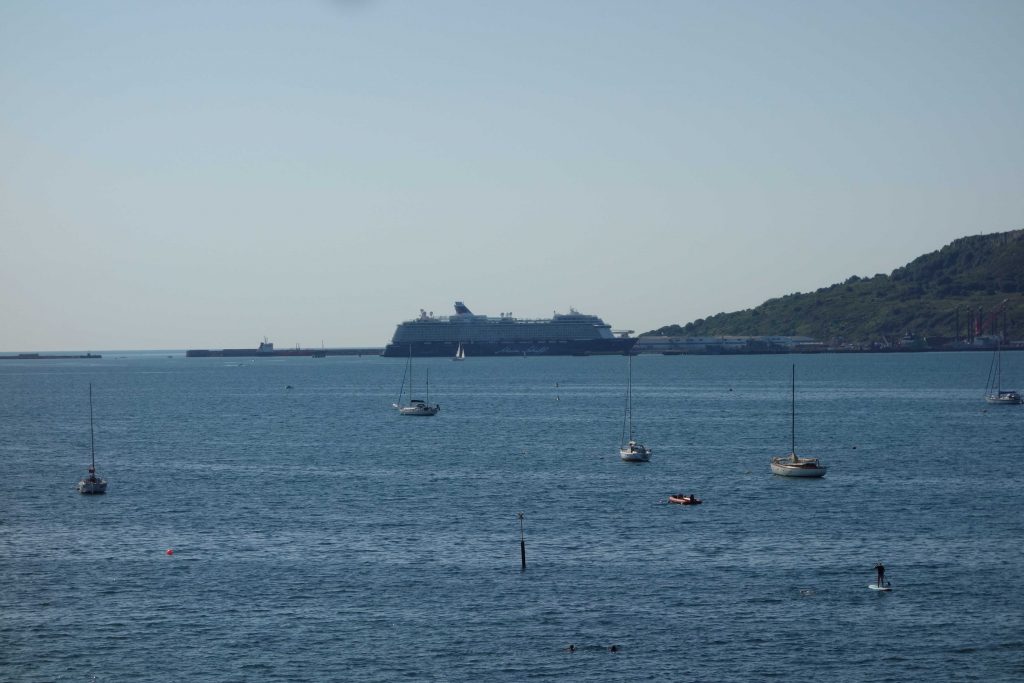
Wyke Regis Halt
The halt was opened in 1909 to serve employees at the Whitehead Torpedo Works.
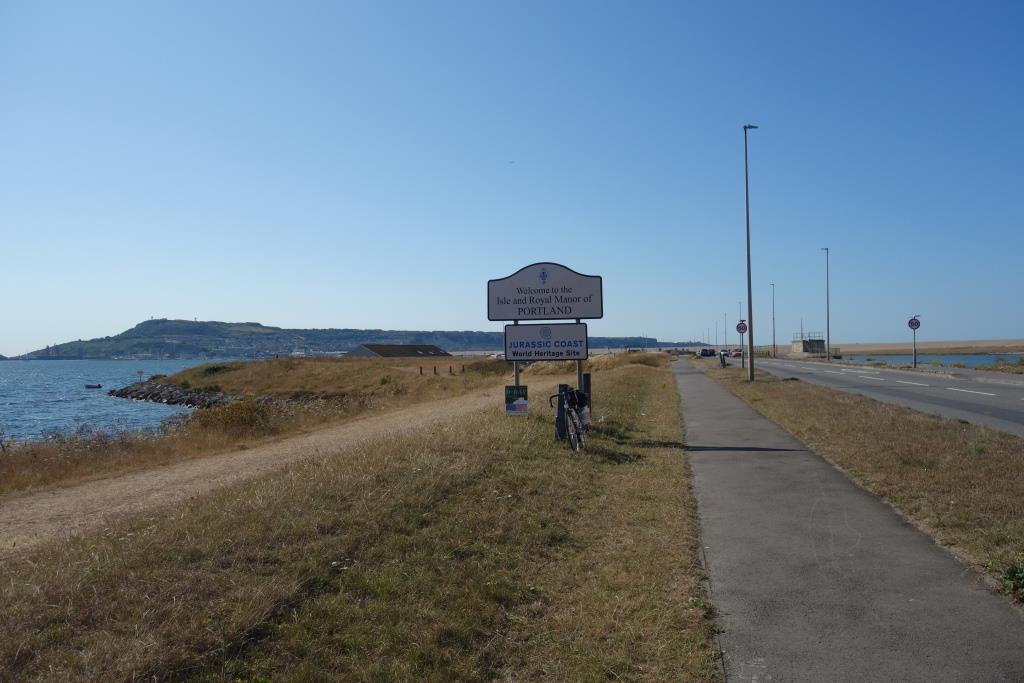
Portland is a “tied” island but the “tie” is not here: it is eight miles away at Abbotsbury. Ferry Bridge used to be here but now The Fleet is crossed further along the road.
Portland
The station was opened in 1865 as the terminus of the branch. It was extended as the Easton & Church Hope in 1902. In 1905, a new station was opened on the curve and the terminus became a goods depot.
The scout rode along to Castletown and to the gate of what had been the R.N. base. He asked the gatekeeper whether he may view the liner, whose superstructure could be seen above the buildings, but of course he was not allowed to enter. The pleasant fellow advised the scout to climb to the R.N. cemetery for a good view. He was more than a little sad that the navy had deserted Portland, the fourth largest man-made harbour in the world, enclosing 2,500 acres. This happened in 1995 and was a colossal blow to the economy of the area.
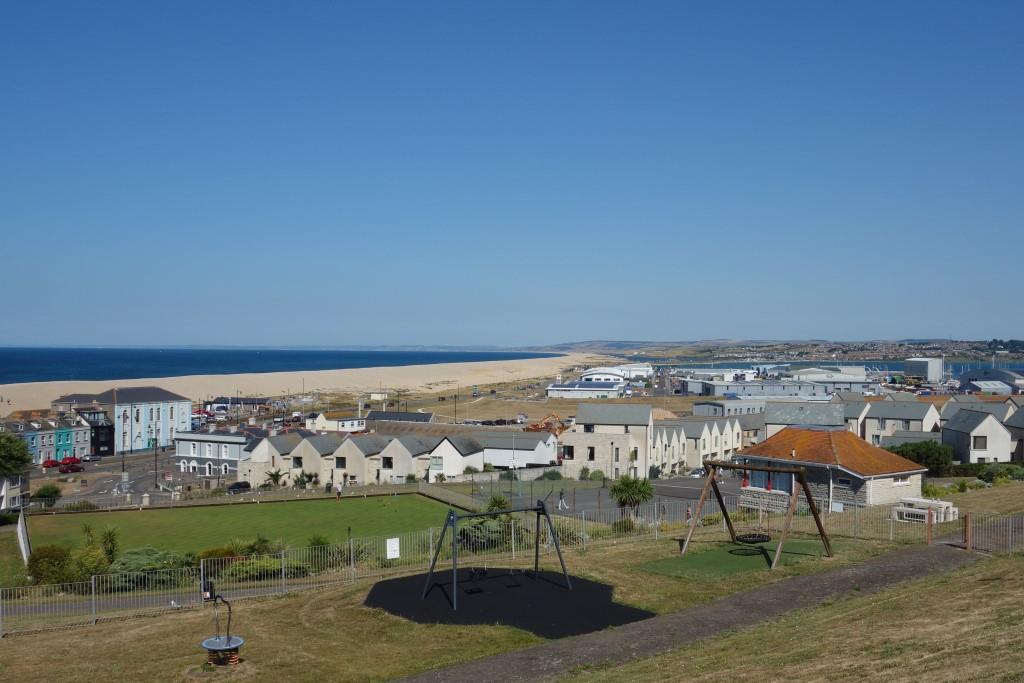
The scout then turned into Harbour View Road. This would have led to the Naval Cemetery if he’d found the way; in fact he missed the crossing of the Merchant’s Way which would have taken him to the heights; he’d climbed this before.
He retreated and continued through Fortuneswell, part of a one-way system, and was rewarded with this entertaining shopfront. Is there really such a thing as tartan paint?

Mr Sheridan told the Dorset Echo: “It was to entertain people, really. It was just putting as many objects in the window as we could put so you could walk past and every time there would be a fresh thing to see. This could be a good way of doing something with the shops to remind us what the high street used to be like.” +
The scout didn’t think it was possible to enter the citadel but in fact the prison only occupies part of it and there is a café which is open to the public. This is where the scout could have had a splendid view of the former naval base and the liner.
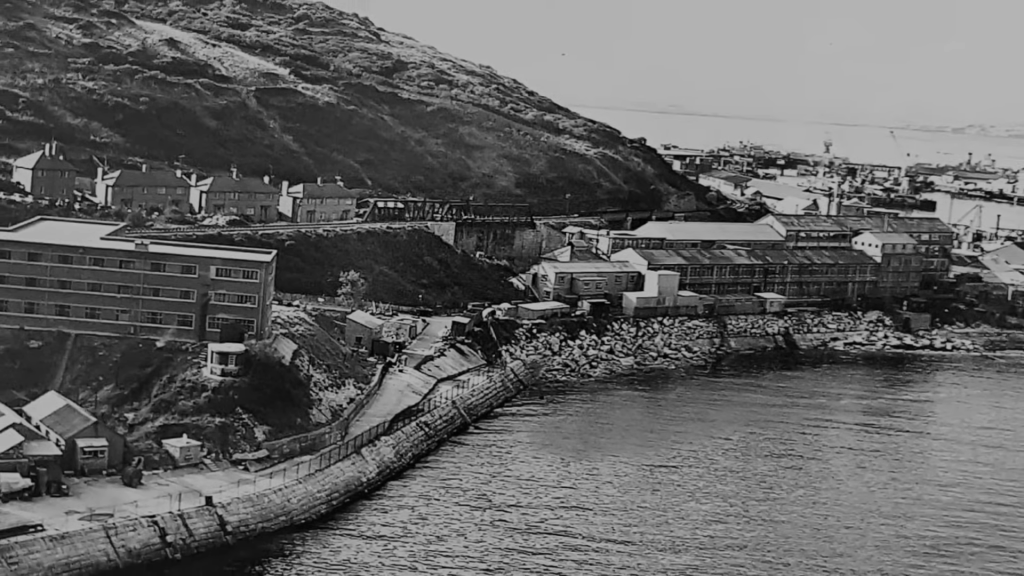
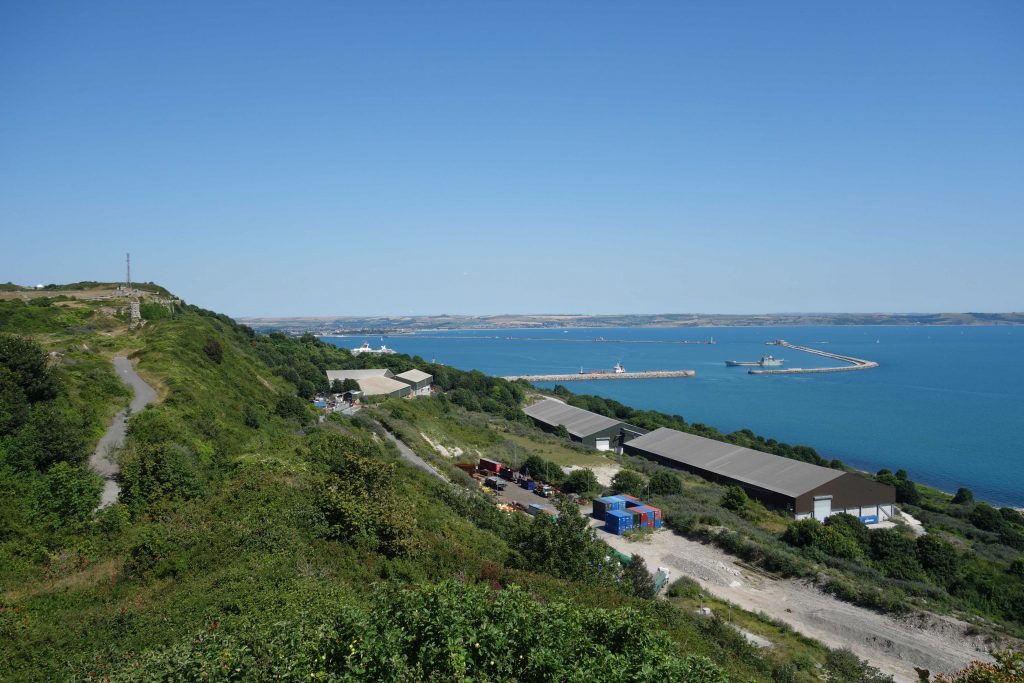
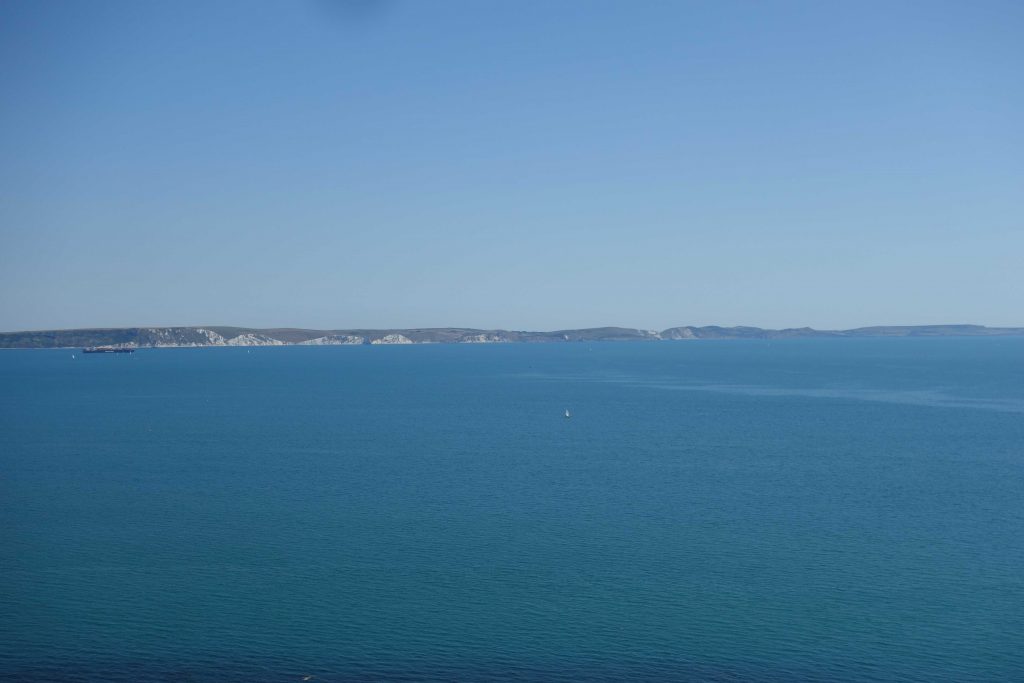
The scout found his way onto Grove Road and rode towards the cliff edge.
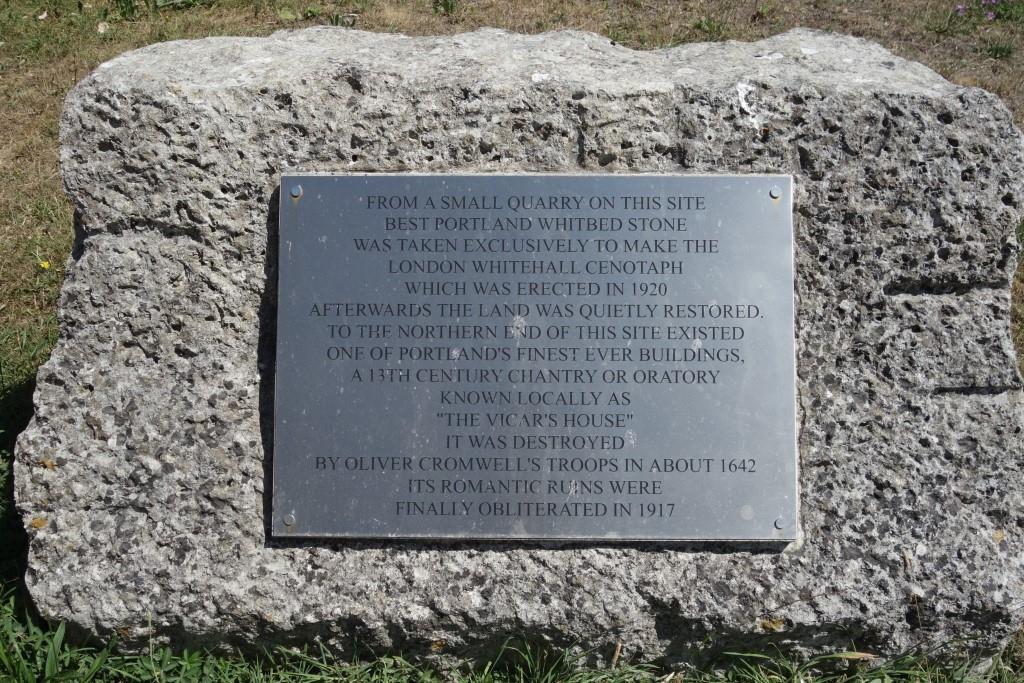
Demand was so great that not all the stones could have come from Portland. +
The scout continued south, crossing the course of Dorset’s most southerly standard gauge line, a private siding which ran alongside Southwell Road.
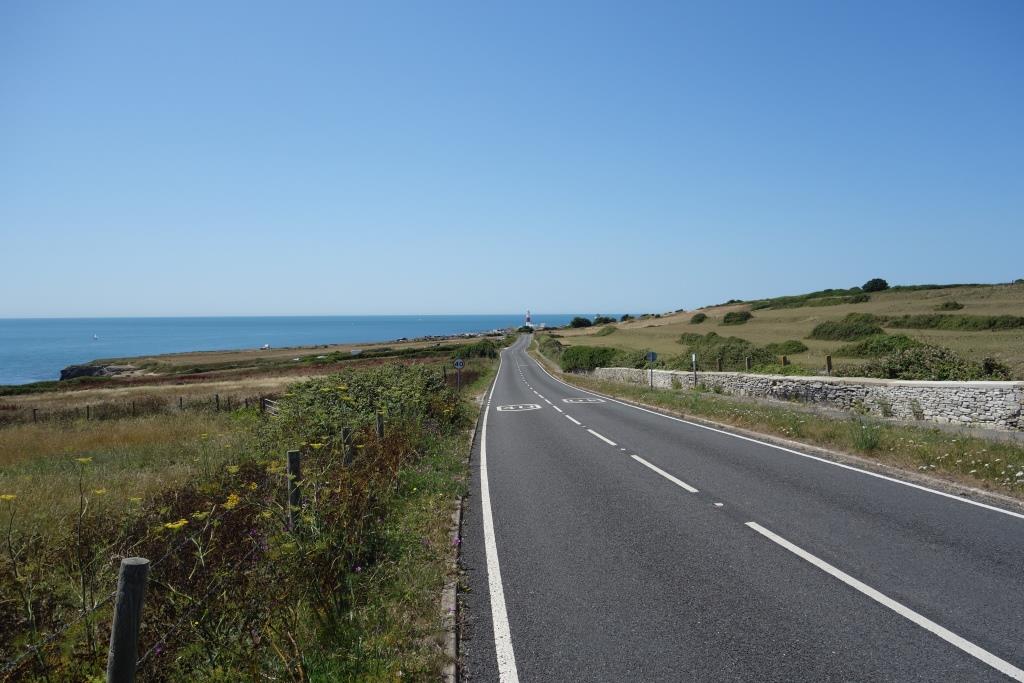
Bill of Portland
Even a short distance from the car park, a wankmobile tore past the scout. He passed the couple, emptying from their travelling cage, who would surely make for the nearest place to sit, stuff their faces and stare into space.
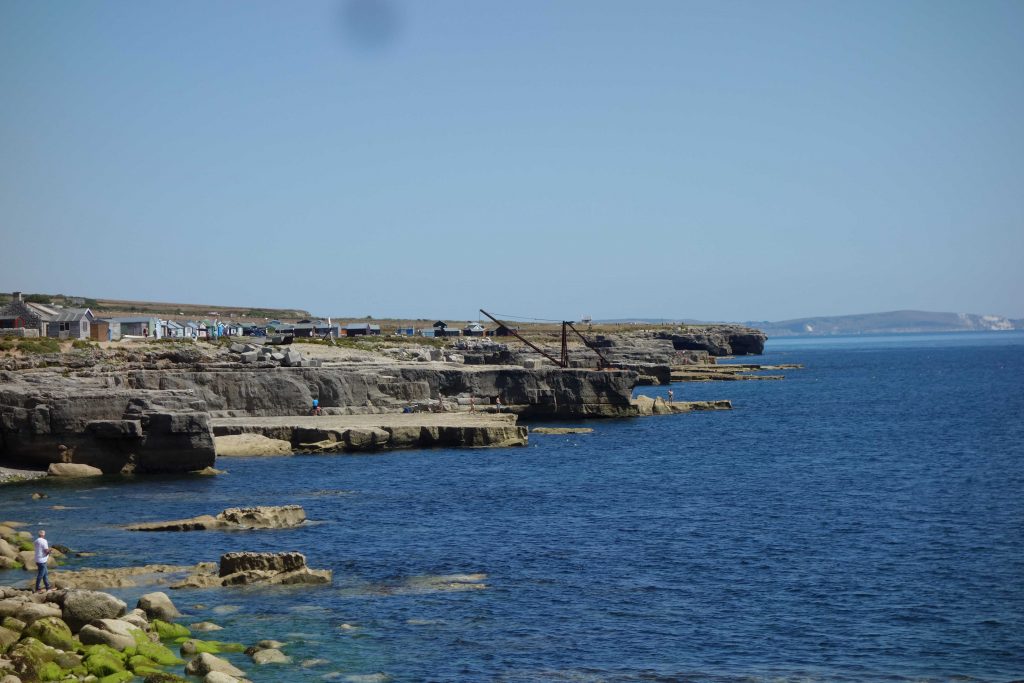
The scout wondered what went on at M.O.D. Portland, a compound not far from the road. He read later that it was established during the 1960s for magnetic measurement. Portland Bill’s remoteness and magnetic cleanliness were the reasons for the choice of location.
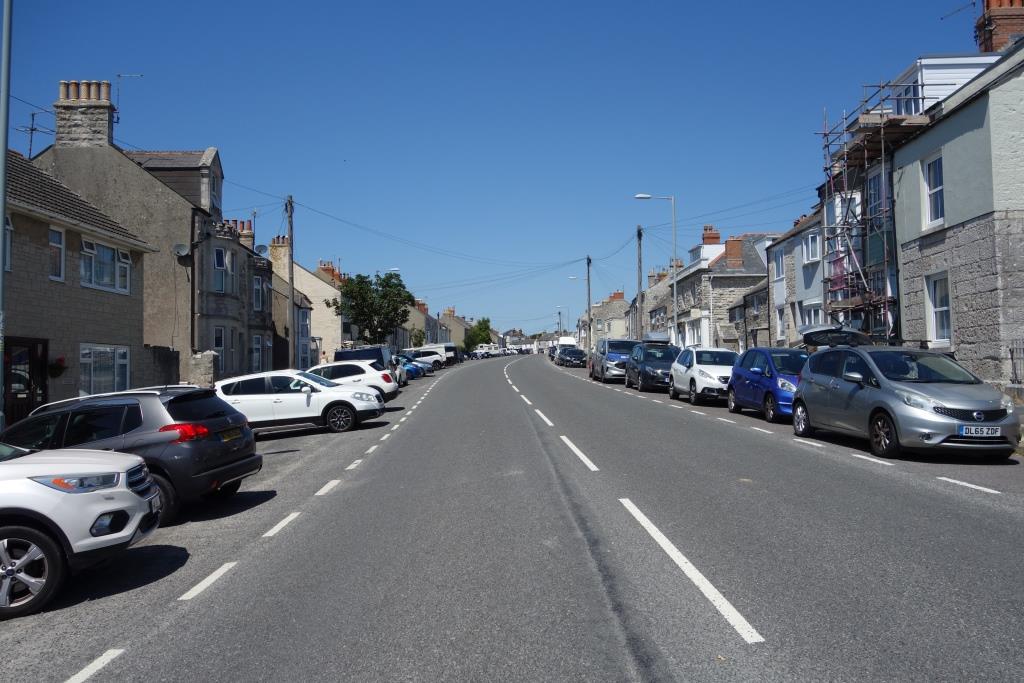
The scout was checking his map in Easton Square when an elderly lady stopped to ask if he needed guidance. She had lived on the island for all but four years of her life and remembered the trains. Strangely, as the station approach could be seen from where she was standing, she sent the scout to Station Road. It didn’t matter. She had her daughter, her husband and their dog living with her but they were shortly to move into a shared ownership house not far away. She told the scout that she never tired of seeing Chesil Beach from the bus.
Easton
The scout bought some water in the Co-op and climbed Easton Road, stopping to photograph the former extent of the line from the station.
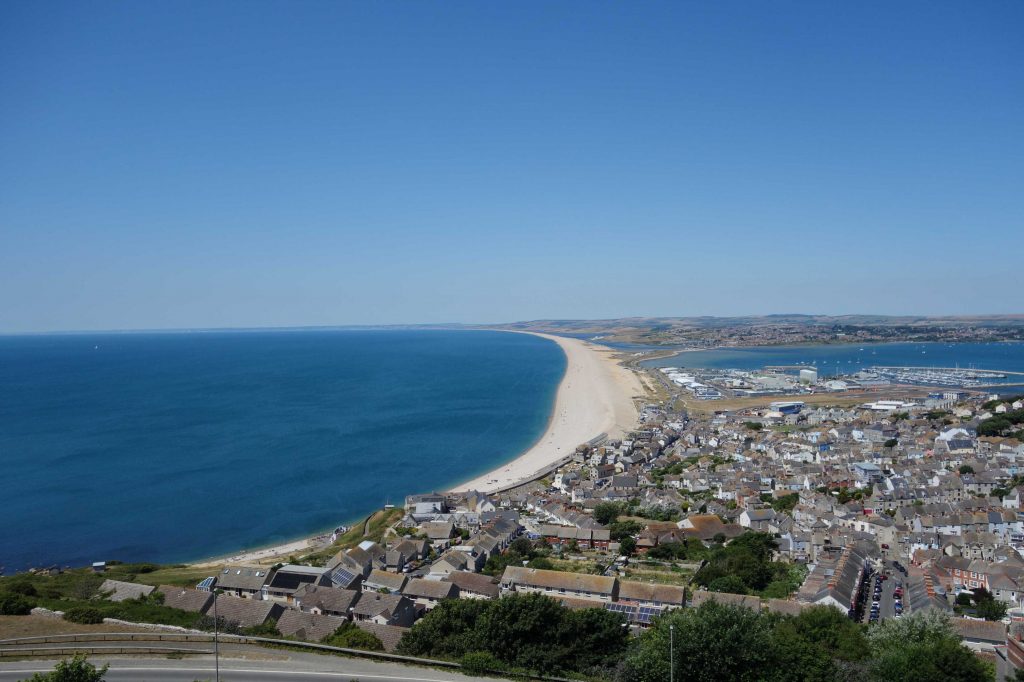
On his return to Weymouth, the scout had a few hours to wander around the quay and along the front, which was heaving with seekers of sun and sea. Like the previous year, he had determined to catch the 1530 rather than face the crush for the 1730 and risk not being able to get his bicycle aboard.
He’d gone to the booking office earlier and tried to reserve a space on one of the Londons from Castle Cary but the clerk advised that either none was available or the system wasn’t working.
There were not as many passengers waiting as there had been in 2024. Some were beach goers clearly cutting their day short so as to avoid the later train.
The Driver, looking like he had just come off the beach, sauntered down the platform. He started the engines and soon the doors of the oven were opened. Just like last time, the air conditioning was defective.
The scout perched on the empty luggage shelf opposite the small bicycle space. He usually tries to stay nearby because, however carefully he places it, his mount can be set in motion. Also if other cyclists get on it’s best to arrange the bikes in station order.
A young lady came past and tapped the scout on the shoulder, saying cheerily: “Nice seat, Buddy.”
The Guard told the scout that air conditioning failures were a commonplace and that staff was getting tired of it. He should have cancelled the train but then passengers would have been stranded.
When the train reached Cary, the scout was fed up and forwent his customary layover. Famished and thirsty, he just wanted to get home and so caught the London that was due in a few minutes.
More fun ensued. The bicycle space in the “bullet train” was taken up with luggage and so the scout had to stay in the vestibule, not knowing if there would be other cyclists or if passengers detraining at Taunton or Peverell would want their bags.
A small illuminated sign above the door on the other side of the corridor indicated that the toilet was out of order. The scout pointed this out to a succession of passengers who thought simply that the toilet was engaged.
From the state of the carpet in the vestibule, it could easily have been thought that there had been a dogfight.
The scout did take a seat briefly. The tip up luggage racks could only be a little less comfortable than the seats whose foam padding had perished.
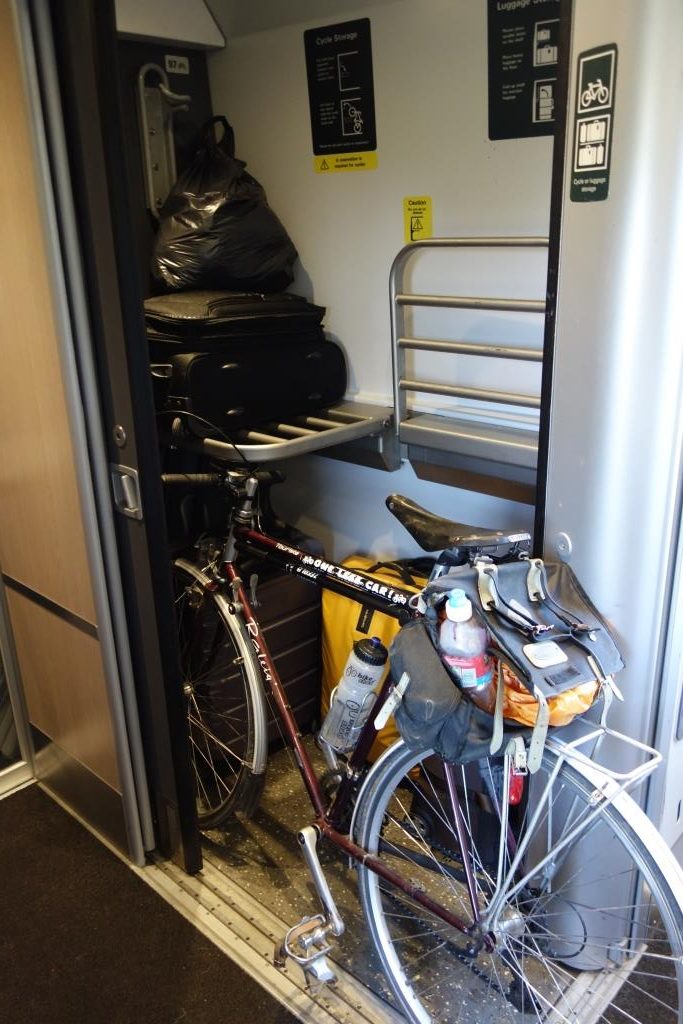
When the Guard closed the doors at Peverell, he started swearing loudly because a woman had requested assistance but had not followed her instructions. The scout wondered how much worse the Guard’s temper might have got had he been working the Weymouth train.
At St. David’s, the scout asked a couple who had joined the Weymouth train at Dorchester whether they had cooled down. He’d heard them say that they had come from Guernsey and that their journey would be 12 hours, door to door. They went across the platform to catch the Barnstaple train.
When he returned to the utilicon, which he’d parked at 0444, the scout had ridden a mere 36 miles.
